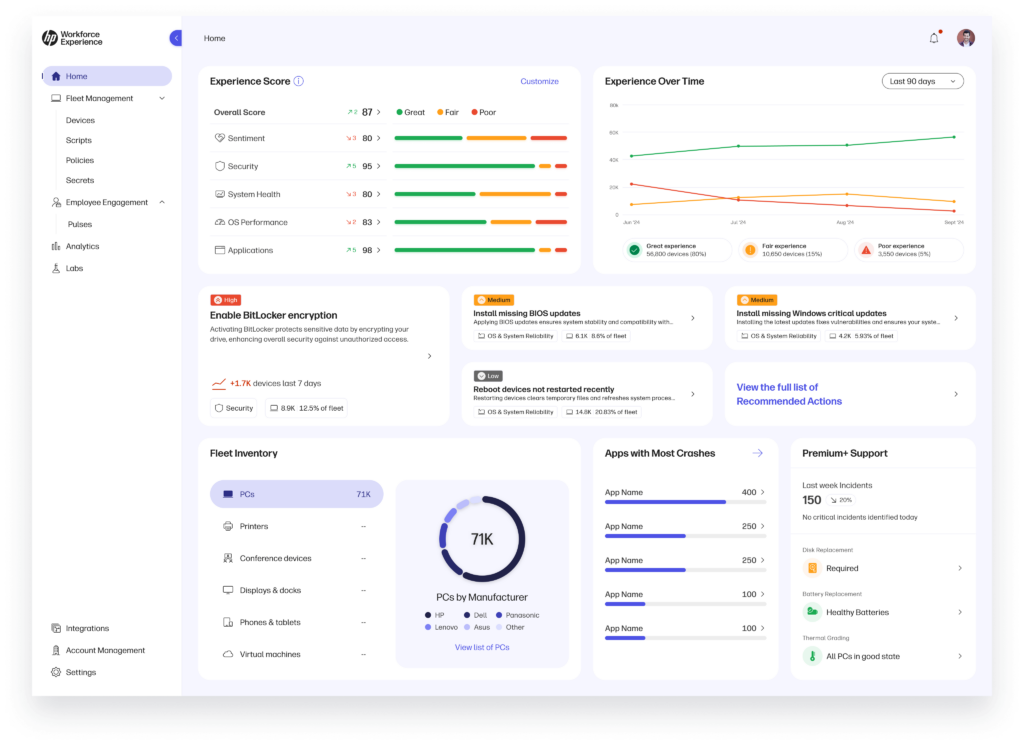Hybrid Workplace Technology Tips
IT experts share why UCaaS alone isn’t enough, how to match tools to workforce needs, and what it takes to manage hybrid tech complexity.
As hybrid work continues to evolve, organizations must rethink their digital infrastructure to empower productivity, connectivity, and inclusivity. From selecting scalable tools to supporting a globally distributed workforce, hybrid workplace technology decisions can have lasting business impacts. The insights below from industry leaders highlight where today’s strategies succeed and where they fall short.
Go beyond UCaaS technology to support hybrid work
The rapid expansion of hybrid work has driven many organizations to adopt unified communications as a service (UCaaS) platforms. Yet, while these tools support video conferencing and collaboration, they don’t fully solve broader hybrid workforce technology challenges. For example, issues with meeting connectivity and device compatibility persist, negatively impacting productivity. According to the State of Hybrid Work 2024 report by Owl Labs, nearly 3 out of 4 of workers say they’ve lost time and started meetings late due to technical difficulties.
“Many companies are not currently able to support a truly hybrid workforce. Although the adoption of UCaaS technologies surged in the past few years, there are still many organizations that lack the ability to fully enable their workforce to adopt a hybrid work environment.”
Wayne Bolen
Federal Account Executive @ HPSource: LinkedIn
Bolen’s point underscores a critical gap in hybrid workplace management software: UCaaS is only part of the solution. A truly functional environment requires a broader investment in modern workplace technology that addresses device onboarding, user experience monitoring, and location-agnostic IT support. As hybrid workforce expectations rise, companies must look beyond point solutions and focus on holistic, integrated systems.
Use the technology that best suits your workforce
While technology adoption is essential, misalignment between tools and workforce needs can create more problems than solutions. Overinvestment in generalized systems may fail to deliver value to diverse employee personas. A recent report from Global Growth Insights notes that more than 70% of organizations have integrated workforce management software, signaling that personalization is no longer a luxury but a necessity.
“It is about workplace flexibility. It’s about giving our associates the opportunity to be who they are as an individual, whether that is a community member, a spouse or parent, or anything in between.”
Amy Freshman
Senior Director, Global HR @ ADPSource: Career Gappers
Freshman’s insight reinforces the importance of aligning hybrid workplace technology with human realities. For many companies, the shift means reassessing digital workplace technology through the lens of personalization and employee choice. Whether deploying collaboration platforms or scheduling tools, the focus should be on enabling flexibility without compromising performance. That’s where hybrid workplace management software tailored to unique team dynamics becomes indispensable.
Use software that can manage many devices across many locations
One of the most pressing challenges of hybrid work is managing the digital sprawl created by an influx of new devices, platforms, and environments. The complexity strains IT resources and diminishes employee experience. According to Gartner, 66% of employees report dealing with moderate to high digital friction, a signal that even the best tools can fall short without proper integration and management.
“We have all noticed how tectonic shifts in workplace dynamics, coupled with the rise of hybrid and remote work environments, have resulted in an explosion of peripheral devices, operating systems, applications, networks, and cloud environments. With some enterprise workforces that span tens, even hundreds of thousands of employees, trying to manage the overall employee experience across an organization — let alone optimize it — is a non-trivial task.”
Faisal Masud
President of Worldwide Digital Services @ HPSource: The Productivity Paradox: Disrupting the Hybrid Workforce
Masud’s perspective points to a growing need for advanced hybrid workplace management software that can handle complexity at scale. From endpoint visibility to automation and policy enforcement, IT departments must use systems that consolidate fragmented tools.
In conclusion, successful hybrid workplace technology adoption hinges on three pillars: going beyond basic communication tools, selecting solutions aligned with workforce needs, and simplifying the complexity of distributed work. As experts like Bolen, Freshman, and Masud reveal, meeting these goals demands thoughtful investment in digital workplace technology and hybrid workplace management software.









